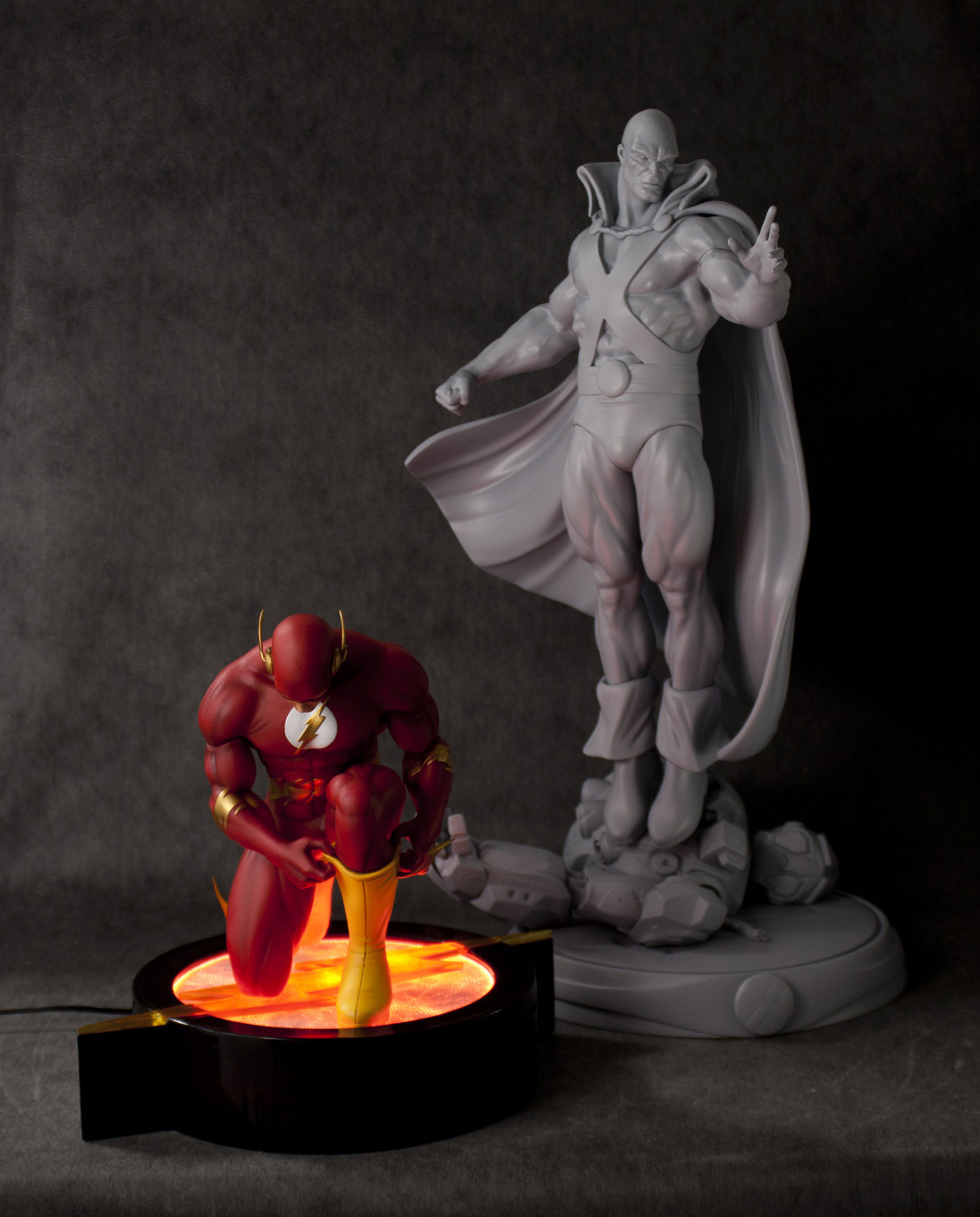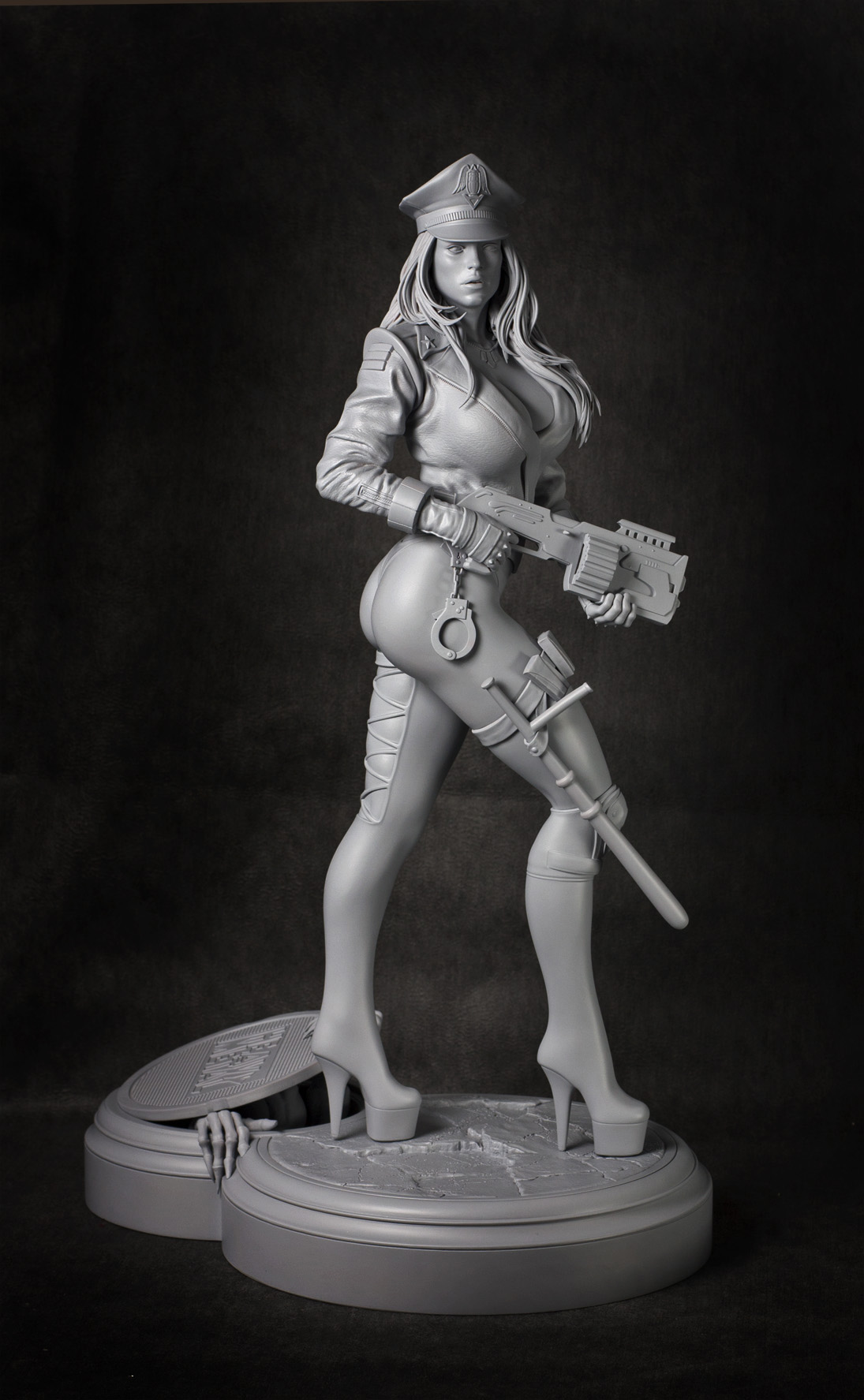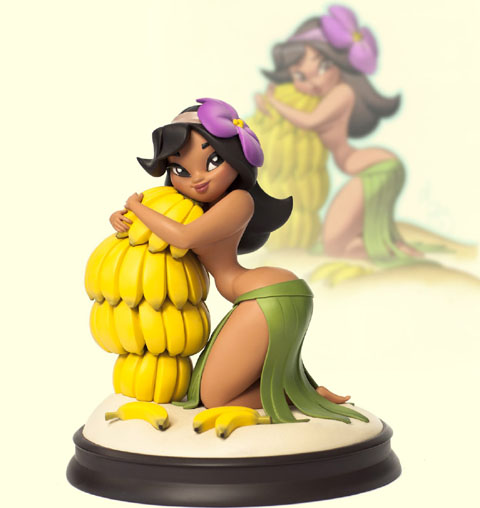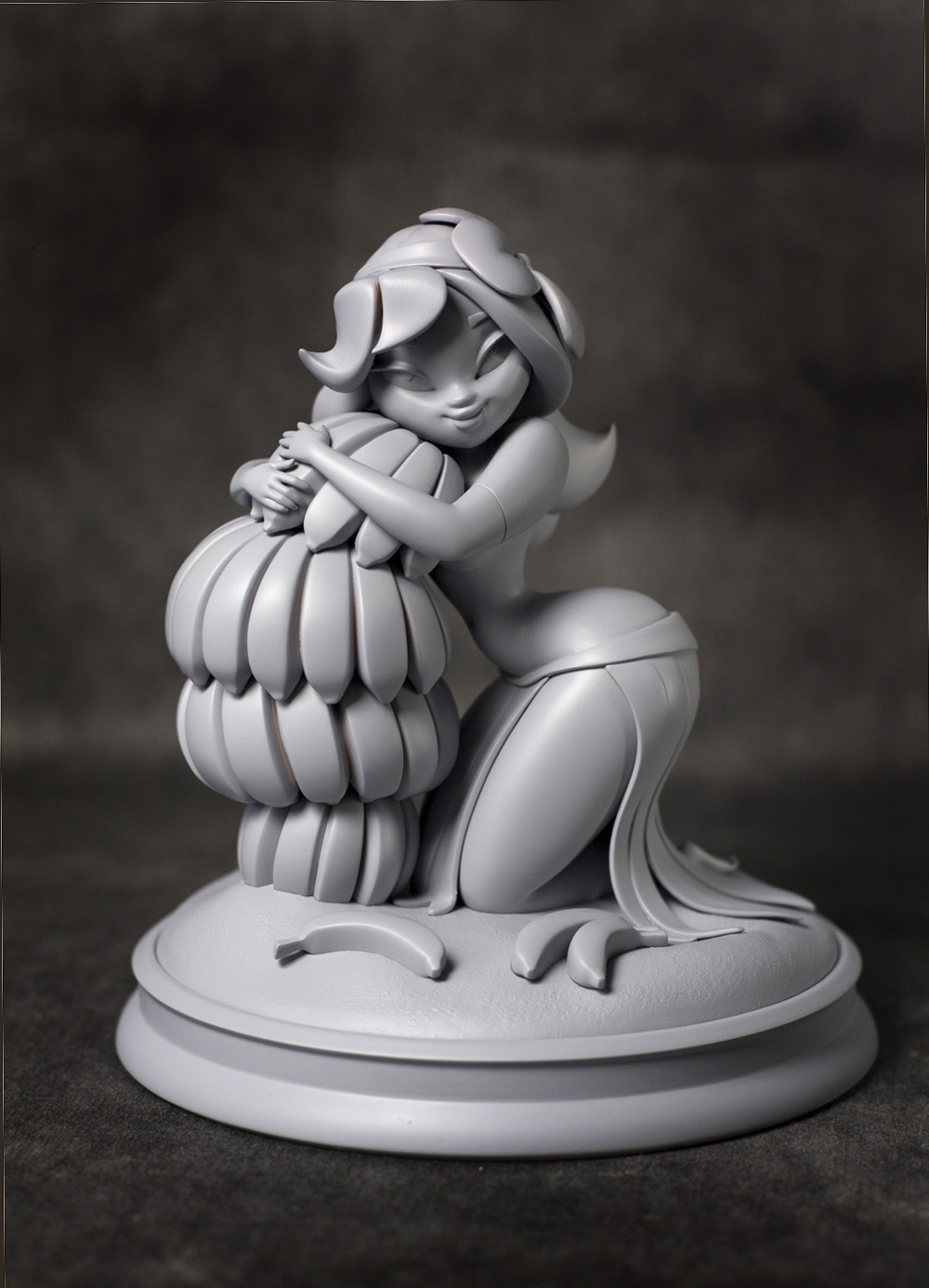Still printing, just not actively advertising or doing promotion at the moment. Hit us up at [email protected] and can see if we can help you make physical art from Zbrush. Or just chat.
Hope you’re still printing! I just sent you an email regarding an Ironman mask!!
Yah do that one on a makerbot replicator or something. It’s too expensive for a halloween oneoff to do it as a fineart piece. Printing on makerbot wouldn’t cost u more than a couple hundred bucks or so if u did it on someone elses machines. Then sand it flat and do a little bit of fiberglass and resin brushing and sanding to smooth it down. Gesso/bondo the surface if u want (unnecessary really… u might wind up with hairline fractures later). Then paint it up. This thing has no detail so its doable on a makerbot. Shapeways would be too expensive tho. We’re probably in line with shapeways or slightly more but yeah… makerbot first. A lot of people just melt PLA/styrene sheets. Or coat cardboard with fiberglass to pull off these ironman suits. Its not worth the like… $30k+ it would cost to prototype the entire suit when u can make it out of $20 of cardboard and $100 in resin and fiberglass to just craft it by hand.
cheers
Oh yah… u guys can buy this limited edition from Eat3D. Sculpted by Michael Pavlovich I think. I dont think there are many of the cold cast bronze though. Only made a few of those.

just wanted to say that dealing with ownage and Desmoda is a treat and the quality is simply unmatched !
Thanks man! I should really update this thread more. Ok… thanks for kicking me in the butt some. Just so much ZBrush art to make… so little time to do it.
Aite… lemme show these people your art first. I’ve been trying to clear the order queue before I start posting stuff but it looks like I can never catch the tail end… Keep em coming guys. I’ll show more and try my best to handle it~
Frank Miller Batman (1:5 scale)  For Shereef
For Shereef  3D Art by Jason Mark
3D Art by Jason Mark


Dystopic (1/6th scale)  Kit produced and sold by Industria Mechanika
Kit produced and sold by Industria Mechanika  Concept Derek Stenning
Concept Derek Stenning  3D Sculpting by Gene Campbell
3D Sculpting by Gene Campbell




This is very impressive work.
Do you need to use special plastic primer before you paint the models? The reason I ask is because I airbrush model cars that my Dad and I collect. We use an etch primer on the plastic and aluminium parts before painting, which makes the paint adhere better. Not using etch primer meant the paint always eventually flaked off. Normal grey primer or 2 pack primer was no good, it had to be etch primer on the bare plastic first. I’m just curious how you overcome this with plastic printed models.
Lacquers. We use a combination of Lacquers, Enamel, Acrylic, Oil, Pastel, Electroplate, Foil… you name it … we will use on a piece/production. But, lacquers are extremely durable and require no primer on non-polished surfaces. I know there are a lot of wise, super experienced artists on this forum so dont want to preach to the choir, but the way lacquers work is much like plastic. Once the lacquer thinner evaporates, the remaining lacquer binder and pigment harden (crosslink) into a extremely durable film… essentially plastic. This plastic is the color layer that we think of when we think of paint on a figure/canvas. The way enamels work and acrylics work are similar, but their performance don’t have the same durability as lacquers. Enamels behave like hard sugar candy. Acrylics behave like colored mud.
The main problem when dealing with lacquers are that synthetic lacquers for hobby markets like Mr Color and Testors dont have the bite of industrial lacquers that people use in production. So they will sometimes scratch off on unprimered plastic. But industrial lacquers/lacquer thinners are really toxic (is your art worth your health?). So the modern way of painting pushes people around a lot of water based acrylic paints and then sealed in with transparent lacquer topcoats. But this sacrifices a lot of techniques for the sake of non-toxicity. Its a tricky choice based on the artist involved and the environment you work in. Just a question of how far you want to go and the regulations of your country regarding clean-air and public health.
Happy Holidays Guys!
Here’s a Flash piece with a cool plasma, lightning base. Too bad Martian isn’t painted and we can lock down that Red And Green Christmas colors. 
Flash (1/5 scale)  AYSculpture/Alkusyl
AYSculpture/Alkusyl  3D Art by Avinash Hegde
3D Art by Avinash Hegde

As an addendum… I dont do scale model kits a lot, but a lot of those cars are made in polycarbonate and lexan. The surfaces are really really smooth. Also the car bodies flex. You use the etch primer to score the surface of the plastic. Normally paint dries into a smooth layer on top of a surface. The problem with flexible surfaces and rigid paint is that when the surface flexes, the paint isn’t really bound to the surface… its just sticking to itself, so it just chips off when the car gets hit or handled. The etching makes microscopic teeth on the surface so the paint sitting on top of the surface sticks to the surface more like velcro.
For resin figures and plaster statues… its different, cause those already have microscopic teeth on the surface. Unlike mass produced car kits which are injection moulded/diecast out of polished metal injection moulds. The closer you get to mirror finish surface, the harder it is for that velcro effect.
Tamiya makes some can-based Polycarbonate paint for basecoating. But so far as I know, no one sells Polycarbonate paint + thinner to be airbrushed at home. I’m sure there’s some one-off stuff from Alclad or other small names, but it’s not something I’m exposed to a lot. Perhaps b/c if that stuff dries in your $400 airbrush… you sure aint getting it out =P Or maybe the thinner is the same chemical used to vapor polish, and that stuff is super super super toxic.
Unpainted batman image from above got broken. reattaching for reference’s sake:

A body building piece for your weight loss New Year’s Resolutions 
Arnold Schwarzenegger Mr Universe (1/4 scale)  Matthew Smith Designs
Matthew Smith Designs  Clay sculpted/3D Scanned/Resculpted in ZBrush by Matthew Smith
Clay sculpted/3D Scanned/Resculpted in ZBrush by Matthew Smith
SSS skin in natural light (went for hot toys style)
Getting better at this real Bronze Powder thing 
Those are some great sculptures! So clean the transition from digital sculpt to 3d print, would love to have some of mine printed too someday.
Thanks Kong =) I’ve got some way cooler pieces to show off but have to wait till items become public.
Get asked about miniatures a bunch. Here is an example 32mm scale miniature. We do 32mm to 1/24 (74-79mm scale) typically. Here you can see the detail comparison of zbrush to 3d print along with finger in picture to show scale.
Dark Elf (32mm)  Kaushik Designs
Kaushik Designs  3D Art by David Richardson
3D Art by David Richardson
More updates soon~
Responding to PM publicly for people new to ZBrush:
[FONT=Times]Desmoda,
[FONT=Times]Thank you for supplying such great information about 3D printing.
[FONT=Times]It has been very interesting seeing the progression of Ownage and your wonderful work.
[FONT=Times]I am a lost-wax bronze figurative sculptor, & have been researching opportunities to develop my product line through customized 3D Prints. I know that this is not new, but I feel that I have established myself in a niche market where I would like to test some prints. Currently I customize my original realistic human wax sculptures, re-mold, & then cast in bronze.
[FONT=Times]This involves reposing similar dance figures, replacing costumes, modifying hair, faces and patina. It is a fulfilling and challenging which I plan to continue in various sizes from 1/6th to larger than life life. However, the process is expensive in time, materials, and foundry labor. In addition, as I age it is becoming more difficult to sculpt accurate faces for my smallest commissions.
[FONT=Times]I have had larger sculptures scanned, scaled, molded, lost-wax cast to provide different price points, so I am somewhat familiar with my technology options. However, I plan to move my 5" - 8" figures toward a digital sculpted / posed / customized approach. While I may use them as protos for molds, I would prefer to import skin texture maps from client’s face photos & produce 1 or 2 custom 3D prints specifically for my clients. I know that the business model for low run work requires a high price tag, but I am already operating in that model, and struggling with time constraints.
[FONT=Times]I have a few questions that I hope you can assist with prior to me investing more time and money.
- Can you suggest a combination of SW that would most likely get me started into testing this approach? Preferably, one package would do it all
I can’t spend more than a few months getting familiar with combinations of packages for my Mac.
Although I am not very good with it, I’ve used Poser for years as a guide for my designs. I am good with Photoshop, but a newbie with DAZ, Blender, and Sculptris.
However, the integration of steps and files across products, prepping for clean printing, mapping skin textures from photos, commercial licensing of character or clothing meshes, etc all are concerns for me regarding integrating those various packages into a quick and efficient work flow from customer order, “minor” customization to my base models, through a high quality finished product.
- Before I purchase ZBrush, do you think it or something else might best fit my needs for creating a few realistic child / teen / adult base sculpts, easily and repeatedly posing and reclothing them, using Projection Master (or something like Facegen Modeler?) to import the face map, and still provide you with a clean file?
- In a 5" tall figure, should I plan on a solid print, or another tool (Wings3D, Netfabb, other?) to hollow the model?
- Do you have suggestions of 3D Print trade shows or conventions I should attend, or additional forums that I should follow?
I am considering visiting SIGGRAPH, ComicCon, or a Maker Faire to continue this research into any other areas I may be missing.
[COLOR=#CCCCCC]Sincerely,
[COLOR=#CCCCCC]Tim King
[COLOR=#CCCCCC]King Sculpture Studios
Hey Tim,
Weird that google bounced the email~ Your question is best answered by someone who works in the film industry as an FX artist. But I think that movies like Avatar, Benjamin Button, etc use the Lightstage approach to capture high detail scans (But is probably out of your price range to get all those skin textures and pores, etc)
[COLOR=#222222][FONT=arial]
The typical @home version of this is to use a structured light scanner at home with a projector (lightstage also does this). The free version of this is the David LaserScanner http://www.david-laserscanner.com/?section=Gallery
[COLOR=#222222][FONT=arial]
You would take the scan data (typicallly point cloud), clean it up to remove holes and make it a solid, watertight mesh (David scanner might provide this software for free… if not here is a comparison of commercial packages (http://www.deskeng.com/articles/aaaypa.htm). Traditionally, you would take the cleaned up triangle mesh and import into ZBrush to retopologize (turn the triangle mesh into a quad mesh by manually creating guidepoints of edgeloops on top of the old mesh to create a new cage and efficient polygon structure to aid in proper distribution of polygons when subdividing for further detail enhancements). But nowadays you can just use dynamesh (one-click) and save yourself a bunch of headache. Then you would just use zbrush’s normal sculpting function to smooth out the holes/jaggies left over from scanning, as well as use sculpting brushes and alpha project to fix fine details such as smile lines and skin texturing.
As for posing and that kind of stuff… without learning how to rig a model for animation (so that they can be posed with bones in Maya/Poser), the easiest way… yeah… is to learn how to transpose figures in zbrush. This essentially defining a temporary pivot point on top of a ZBrush sculpture… then like in photoshop… creating a mask to define what areas of the sculpt are editable… then using a 3d transform tool to rotate/scale/skew etc.
If you’re planning to 3d print with us, then you don’t have to hollow the model because our prices are only based on surface area. Hollowing the model increases the total surface area. But to hollow the model for your own 3d printing, ZBrush provides this feature for free. But you can use other software packages like Netfabb or Materialise Magics to do this as well.
As for tradeshows or forums. I think your best bet is to keep an eye on the top row posts on ZBrush Central as these posts typically highlight both outstanding work and process used create the work and span a range of disciplines such as Video Games/Film/Traditional Sculpture/Jewelry Making. Then after u get the broad spectrum from ZBC, you probably are best served by film industry oriented articles in CG Film specific websites. Sorry, I dont work in that industry so I can only point you in a general direction.
99% of people on here are more experienced at CG art than me, so feel free to find someone such as Scott Patton (http://www.zbrushcentral.com/showthread.php?79195-Avatar) or Brandon Lawless (http://www.zbrushcentral.com/showthread.php?58729-The-Black-Pearl) and dig into their genius.
hope that helps!
Des
Heavy Metal Cybercop (1:4 scale) & Heavy Metal Medusa (1:4 Scale)  Hollywood Collectibles Group
Hollywood Collectibles Group  3D Art by Steve Jubinville[COLOR=#222222][FONT=arial]
3D Art by Steve Jubinville[COLOR=#222222][FONT=arial]
[COLOR=#222222][FONT=arial]

Des,
As always, you provided wonderful and extremely fast information.
Again, I am probably stating the obvious, but one of my greatest pleasures in the art industry is in how most artists are genuinely excited to teach and share.
I look forward to purchasing ZBrush and creating my first digital projects!
Tim
That’s awesome you can do that! 
I’m currently still learning z-brush…but I’m a traditional sculptor and taking to z-brush pretty fast. I do some traditional mold making and casting as well, and I have a werewolf piece I sell for around $400.00. I can’t really charge less due to the time it takes, and how pricey the resin is! If I didn’t have to deal with so many airbubbles though, I would decrease my price greatly. Believe me, I can empathize with the work load and cost. My problem is, I don’t have any injection capabilities, so I have to deal with airbubble HELL on everything, lol.
I mean no disrespect, but is there any way to get a character or creature printed for less $$, unpainted? I have a character I’m working on currently that I would love to get printed, but I prefer to paint my own stuff (painting is sorta the fun/easy reward for me and I feel possessive about my own artwork…I want to be the one painting my own piece, lol). Or has the price gone down at all since you posted this thread? I keep hearing 3D printing is going down a bit in price, but I’m having trouble finding places. from what i can tell, the ZTL files in most places need to be converted to a different format to be printer ready.
Since I know how to mold and cast…is there a cheaper material to print a 3D model in, that still retains detail? I could probably (depending on undercuts and narrow parts) do a traditional mold and cast to have them in polyurethane resin…but it’s still a big limiting problem not having injection capabilities. Thanks for your time! :). I’m attaching a pic of my traditional werewolf pieces I cast from my originals. The pose is simple and so are the undercuts, so I did these from a simple two piece block mold. I’ll consider paying you for a 3D print at some point, but a few artists I know said to get a 6 inch figure, it might cost around $100.00 (more within my price range), though I know you said you only do 9 inches. Very cool you offer this at all though…plastic is the way to go if it’s durable enough! I’ve loved the strength of the polyurethane resin I cast in.

Hey meadowknight! Hmm… this thread has been going on for years. Right now we do every scale from 30mm miniatures up to 1:1 fullsize props. Haven’t done any 1:1 people yet b/c its cheaper to mill those out of foam and we dont do any 5-axis CNC yet. Have done some 1:2 scale busts and stuff though and 1:1 heads and helmets for Starwars stuff and cosplay game weaponry.
Ok, so back to ur stuff, we can make kits for you if you want. But normally we don’t do production work for non-digital artwork (and production that we do is still kinda underground). The cheapest way to make unpainted figures is to silicone mould from the initial clay sculpt or 3d print. The reason you’re having airbubble problems is your casting setup. You need to both vacuum and pressure when u cast each piece. U vacuum first to suck up all the larger airbubbles from the resin in the mould. Air typically gets trapped in those upwards facing fingers and horns and toes if you dont gate them properly with air vents. Using a vacuum chamber all this air gets sucked up towards the pouring sprue and u will see the resin kinda boil and froth (this is air leaving the mould). Then u need to quickly throw it into a very very high PSI pressure pot. What this does is vaporize the remaining tiny <1mm airbubbles in the resin so that what you get is a flawless piece out. There are ways to do it both these processes manually or automatically… depending on how much money u have to spend on machinery. Ugh, I’m probably preaching to an expert  . For all the rest of the people reading this… be careful with pressure pot at home, b/c non-industrial equipment thrown together for hobby-work can explode and cause major injury.
. For all the rest of the people reading this… be careful with pressure pot at home, b/c non-industrial equipment thrown together for hobby-work can explode and cause major injury.
Very awesome werewolf though!  Looks to be roughly a 10-12 incher? Nice design though, can be cast from a single mould with no assembly other than the base… Would need a pretty big pressure pot to fit the thing as one piece. Thats a lot of PSI… Lol, you put your fishoil capsules and your eyedrops next to all your painting stuff! But I guess its all acrylic so its ok. I dunno… how are your acrylics? Are they durable? I can never get them to work well for production pieces that need to be handled a lot. I guess you could topcoat like mad, but i feel like its a whole bunch of extra work.
Looks to be roughly a 10-12 incher? Nice design though, can be cast from a single mould with no assembly other than the base… Would need a pretty big pressure pot to fit the thing as one piece. Thats a lot of PSI… Lol, you put your fishoil capsules and your eyedrops next to all your painting stuff! But I guess its all acrylic so its ok. I dunno… how are your acrylics? Are they durable? I can never get them to work well for production pieces that need to be handled a lot. I guess you could topcoat like mad, but i feel like its a whole bunch of extra work.
Ok… hmm… I guess I have to post an artpiece for each post. Uh… ok hmm… maybe something celshady. I photographed it on a white background cause they needed it for the marketing photos. Sry
Banana Girl 1/8th scale  Digital Banana Studio
Digital Banana Studio  Pixar Artist Bill Pressing in collab with 3D Artist Anders Ehrenbourg
Pixar Artist Bill Pressing in collab with 3D Artist Anders Ehrenbourg


Made a couple hundred of these. I think they’re mostly sold out! Eek. Maybe a few skirt left according to inventory.
As an addendum, yeah… 3d prints are expensive compared to clay. There’s no getting around that. But the reason there’s a massive shift to ZBrush and digital is the whole convergence effect. It’s simply faster to do most things in ZBrush than it is to do it traditionally. You have more control (other than for perspective camera problems). And are around 2-5 times faster. I can’t speak for 3d printing companies… but the reason we have to charge what we do is because we have to labouriously prep, fix, finish and ship completed production artwork to people… not raw 3d prints. So you’re essentially taking the nitty gritty part out of artwork design and letting us take care of that part while you focus mainly on the concepting and idea part. The physical/technical aspect is consolidated into the factory/foundry side. It’s just a shifting of the bang for buck line. Digital tools empower people up and down the chain. But it also raises the bar for everyone by letting people reach new levels of productivity and sophistication with the time/mental energy saved.
I so appreciate this thread and all the knowledge you share here. It is truly inspiring to see all the work being down with 3D digital printing. The resolution you are getting is amazing. How much longer do you think it will be before we see this type of print resolution in the 2,000 - 5,000 dollar range (printer wise)?
Thanks again for all the contributions!















